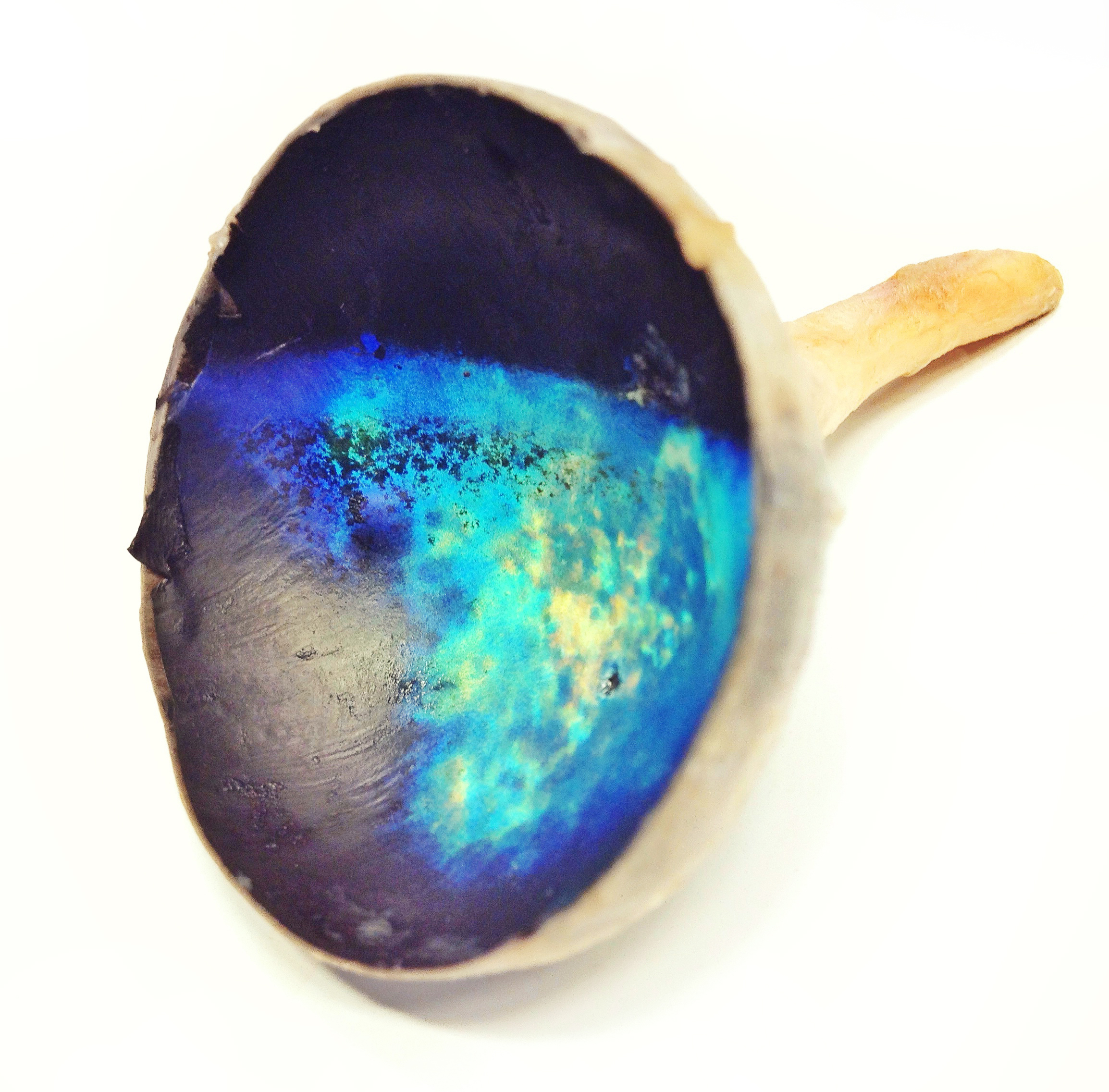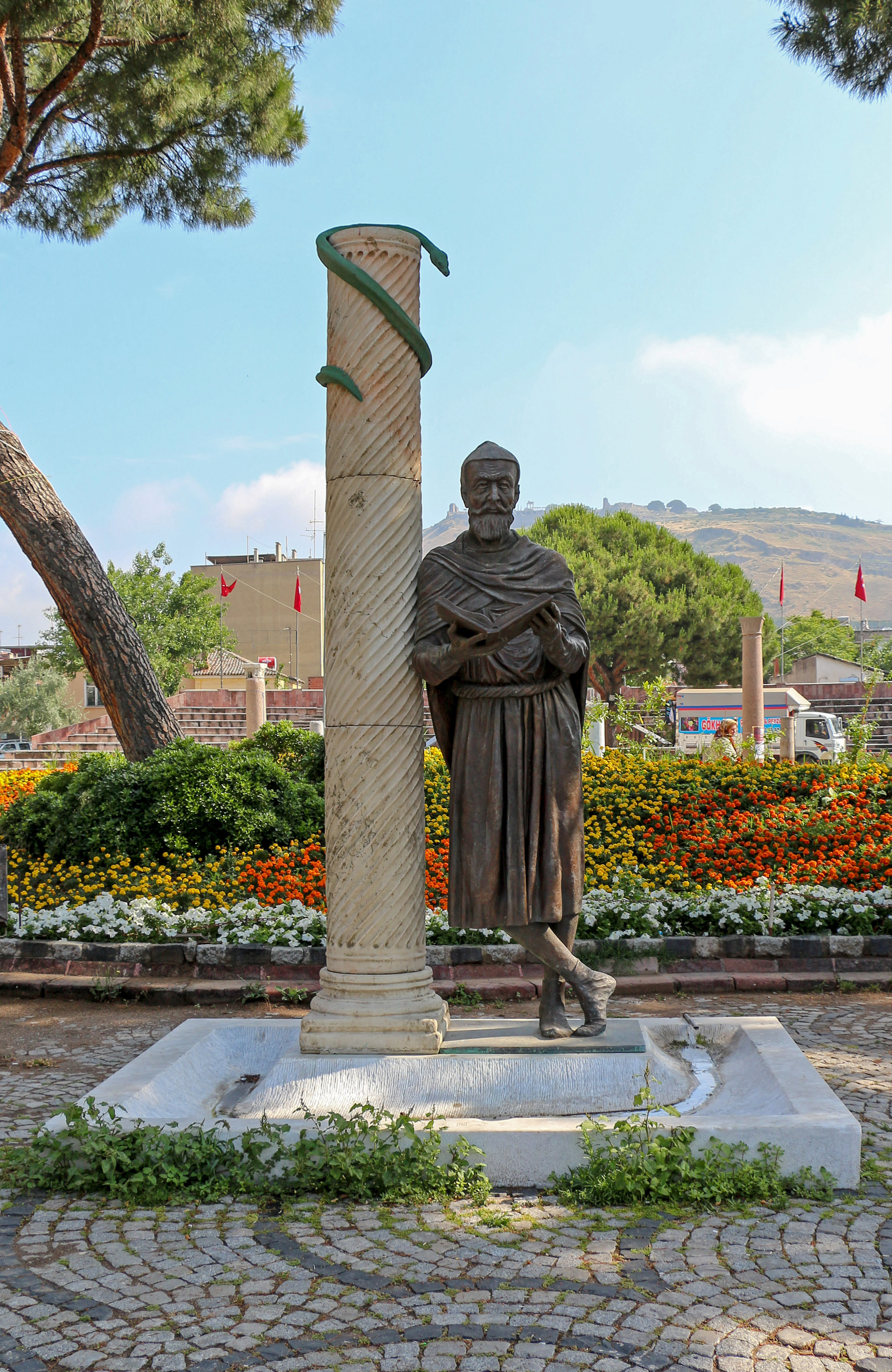|
Emission Theory (vision)
Emission theory or extramission theory (variants: extromission) or extromissionism is the proposal that visual perception is accomplished by eye beams emitted by the eyes. This theory has been replaced by '' intromission theory'' (or ''intromissionism''), which is that visual perception comes from something representative of the object (later established to be rays of light reflected from it) entering the eyes. Modern physics has confirmed that light is physically transmitted by photons from a light source, such as the sun, to visible objects, and finishing with the detector, such as a human eye or camera. History In the fifth century BC, Empedocles postulated that everything was composed of four elements; fire, air, earth, and water. He believed that Aphrodite made the human eye out of the four elements and that she lit the fire in the eye which shone out from the eye, making sight possible. If this were true, then one could see during the night just as well as during the da ... [...More Info...] [...Related Items...] OR: [Wikipedia] [Google] [Baidu] |
Atomism
Atomism () is a natural philosophy proposing that the physical universe is composed of fundamental indivisible components known as atoms. References to the concept of atomism and its Atom, atoms appeared in both Ancient Greek philosophy, ancient Greek and Ancient Indian philosophy, ancient Indian philosophical traditions. Leucippus is the earliest figure whose commitment to atomism is well attested and he is usually credited with inventing atomism. He and other ancient Greek atomists theorized that nature consists of two fundamental Principle (philosophy), principles: ''atom'' and Void (philosophy), ''void''. Clusters of different shapes, arrangements, and positions give rise to the various macroscopic Substance (philosophy), substances in the world.Berryman, Sylvia, "Ancient Atomism", ''Stanford Encyclopedia of Philosophy, The Stanford Encyclopedia of Philosophy'' (Fall 2008 Edition), Edward N. Zalta (ed.)online/ref> Indian Buddhists, such as Dharmakirti ( 6th or 7th century) ... [...More Info...] [...Related Items...] OR: [Wikipedia] [Google] [Baidu] |
Alhazen
Ḥasan Ibn al-Haytham ( Latinized as Alhazen; ; full name ; ) was a medieval mathematician, astronomer, and physicist of the Islamic Golden Age from present-day Iraq.For the description of his main fields, see e.g. ("He is one of the principal Arab mathematicians and, without any doubt, the best physicist.") , ("Ibn al-Ḥaytam was an eminent eleventh-century Arab optician, geometer, arithmetician, algebraist, astronomer, and engineer."), ("Ibn al-Haytham (d. 1039), known in the West as Alhazan, was a leading Arab mathematician, astronomer, and physicist. His optical compendium, Kitab al-Manazir, is the greatest medieval work on optics.") Referred to as "the father of modern optics", he made significant contributions to the principles of optics and visual perception in particular. His most influential work is titled '' Kitāb al-Manāẓir'' (Arabic: , "Book of Optics"), written during 1011–1021, which survived in a Latin edition. The works of Alhazen were frequentl ... [...More Info...] [...Related Items...] OR: [Wikipedia] [Google] [Baidu] |
Thesaurus Opticus Titelblatt
A thesaurus (: thesauri or thesauruses), sometimes called a synonym dictionary or dictionary of synonyms, is a reference work which arranges words by their meanings (or in simpler terms, a book where one can find different words with similar meanings to other words), sometimes as a hierarchy of broader and narrower terms, sometimes simply as lists of synonyms and antonyms. They are often used by writers to help find the best word to express an idea: Synonym dictionaries have a long history. The word 'thesaurus' was used in 1852 by Peter Mark Roget for his ''Roget's Thesaurus''. While some works called "thesauri", such as ''Roget's Thesaurus'', group words in a hierarchical hypernymic taxonomy of concepts, others are organised alphabetically or in some other way. Most thesauri do not include definitions, but many dictionaries include listings of synonyms. Some thesauri and dictionary synonym notes characterise the distinctions between similar words, with notes on their "conn ... [...More Info...] [...Related Items...] OR: [Wikipedia] [Google] [Baidu] |
Speed Of Light
The speed of light in vacuum, commonly denoted , is a universal physical constant exactly equal to ). It is exact because, by international agreement, a metre is defined as the length of the path travelled by light in vacuum during a time interval of second. The speed of light is invariant (physics), the same for all observers, no matter their relative velocity. It is the upper limit for the speed at which Information#Physics_and_determinacy, information, matter, or energy can travel through Space#Relativity, space. All forms of electromagnetic radiation, including visible light, travel at the speed of light. For many practical purposes, light and other electromagnetic waves will appear to propagate instantaneously, but for long distances and sensitive measurements, their finite speed has noticeable effects. Much starlight viewed on Earth is from the distant past, allowing humans to study the history of the universe by viewing distant objects. When Data communication, comm ... [...More Info...] [...Related Items...] OR: [Wikipedia] [Google] [Baidu] |
Optics
Optics is the branch of physics that studies the behaviour and properties of light, including its interactions with matter and the construction of optical instruments, instruments that use or Photodetector, detect it. Optics usually describes the behaviour of visible light, visible, ultraviolet, and infrared light. Light is a type of electromagnetic radiation, and other forms of electromagnetic radiation such as X-rays, microwaves, and radio waves exhibit similar properties. Most optical phenomena can be accounted for by using the Classical electromagnetism, classical electromagnetic description of light, however complete electromagnetic descriptions of light are often difficult to apply in practice. Practical optics is usually done using simplified models. The most common of these, geometric optics, treats light as a collection of Ray (optics), rays that travel in straight lines and bend when they pass through or reflect from surfaces. Physical optics is a more comprehensive mo ... [...More Info...] [...Related Items...] OR: [Wikipedia] [Google] [Baidu] |
Gezienus Ten Doesschate
Gezienus (or Gesinus) ten Doesschate (11 August 1885 in Zwolle – 9 March 1965 in Utrecht) was a Dutch ophthalmologist, amateur painter and historian. He was active as an amateur painter in Utrecht under the pseudonym Thomas Denier. He had good contacts with the cultural elite of Utrecht around the First World War and was good friends with the painters Janus de Winter and . In 1916 he was briefly a member of ''de Anderen,'' a Dutch artists' group that included Theo van Doesburg Theo van Doesburg (; born Christian Emil Marie Küpper; 30 August 1883 – 7 March 1931) was a Dutch painter, writer, poet and architect. He is best known as the founder and leader of De Stijl. He married three times. Personal life Theo van Do ..., but dropped out in support of ''de Winter,'' another artists group. At the end of his life he contributed to a number of medical-historical books concerning the University of Utrecht. [...More Info...] [...Related Items...] OR: [Wikipedia] [Google] [Baidu] |
Tapetum Lucidum
The ; ; : tapeta lucida) is a layer of tissue in the eye of many vertebrates and some other animals. Lying immediately behind the retina, it is a retroreflector. It Reflection (physics), reflects visible light back through the retina, increasing the light available to the Photoreceptor cell, photoreceptors (although slightly blurring the image). The tapetum lucidum contributes to the superior night vision of some animals. Many of these animals are nocturnality, nocturnal, especially carnivores, while others are Deep-sea community, deep-sea animals. Similar adaptations occur in some species of spiders. Haplorhini, Haplorhine primates, including humans, are Diurnality, diurnal and lack a tapetum lucidum. Function and mechanism The presence of a tapetum lucidum enables animals to see in dimmer light than would otherwise be possible. The tapetum lucidum, which is iridescent, reflects light roughly on the Interference (wave propagation), interference principles of thin-film opti ... [...More Info...] [...Related Items...] OR: [Wikipedia] [Google] [Baidu] |
Raccoon Red Eye
The raccoon ( or , ''Procyon lotor''), sometimes called the North American, northern or common raccoon (also spelled racoon) to distinguish it from Procyonina, other species of raccoon, is a mammal native to North America. It is the largest of the procyonid family, having a body length of , and a body weight of . Its grayish coat mostly consists of dense underfur, which insulates it against cold weather. The animal's most distinctive features include its extremely dexterous front paws, its facial mask, and its ringed tail, which are common themes in the mythologies of the Indigenous peoples of the Americas surrounding the species. The raccoon is noted for its animal cognition, intelligence, and studies show that it can remember the solution to tasks for at least three years. It is usually nocturnal and omnivorous, eating about 40% invertebrates, 33% plants, and 27% vertebrates. The original habitats of the raccoon are deciduous and temperate broadleaf and mixed forests, mixed ... [...More Info...] [...Related Items...] OR: [Wikipedia] [Google] [Baidu] |
Galenic Corpus
The Galenic corpus is the collection of writings of Galen, a prominent Greek physician, surgeon and philosopher in the Roman Empire during the second century CE. Several of the works were written between 165–175 CE. Description Galen produced more work than any author in antiquity,Kotrc RF, Walters KR. "A bibliography of the Galenic Corpus. A newly researched list and arrangement of the titles of the treatises extant in Greek, Latin, and Arabic". ''Trans Stud Coll Physicians Philad''. 1979 Dec;1(4): 256-304 His surviving work runs to over 2.6 million words, and many more of his writings are now lost. Karl Gottlob Kühn of Leipzig (1754–1840) published an edition of 122 of Galen's writings between 1821 and 1833. His edition, which is the most complete, although flawed, consists of the Greek text with facing-page Latin translation. The text and translation are mainly taken from the edition of Chartier 1638—39, Paris. Kühn's edition runs to 22 volumes, 676 index pages, bein ... [...More Info...] [...Related Items...] OR: [Wikipedia] [Google] [Baidu] |
Galen
Aelius Galenus or Claudius Galenus (; September 129 – AD), often Anglicization, anglicized as Galen () or Galen of Pergamon, was a Ancient Rome, Roman and Greeks, Greek physician, surgeon, and Philosophy, philosopher. Considered to be one of the most accomplished of all medical researchers of Ancient history, antiquity, Galen influenced the development of various scientific disciplines, including anatomy, physiology, pathology, pharmacology, and neurology, as well as philosophy and logic. The son of Aelius Nicon, a wealthy Greek architect with scholarly interests, Galen received a comprehensive education that prepared him for a successful career as a physician and philosopher. Born in the ancient city of Pergamon (present-day Bergama, Turkey), Galen traveled extensively, exposing himself to a wide variety of medical theories and discoveries before settling in Ancient Rome, Rome, where he served prominent members of Roman society and eventually was given the position of perso ... [...More Info...] [...Related Items...] OR: [Wikipedia] [Google] [Baidu] |






